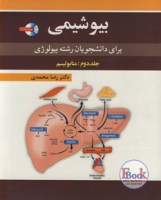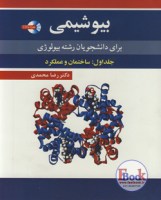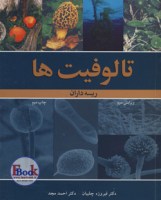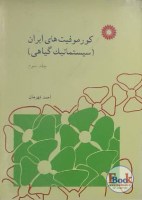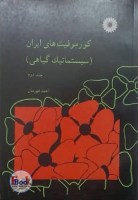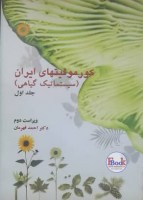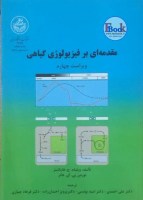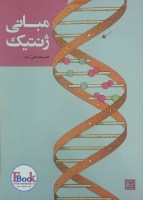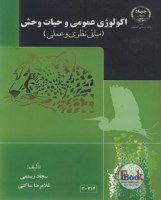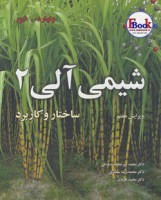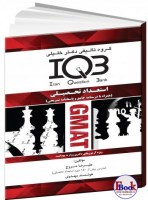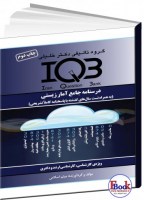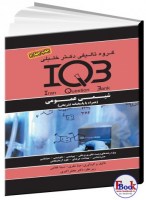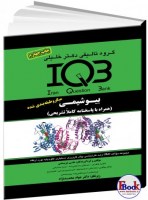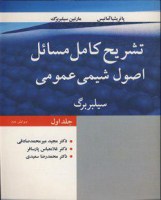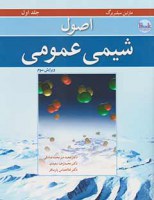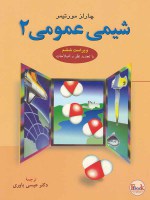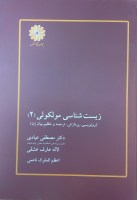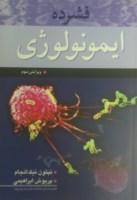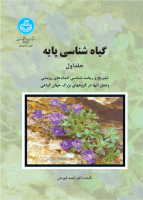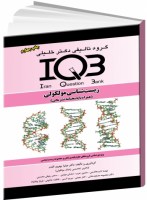دسته بندی
مقدمه ای بر فیزیولوژی گیاهی جلد اول (دانشگاه تهران)
موضوع مورد بحث این کتاب این است که گیاهان چگونه اعمال خود را انجام می دهند. این کتاب درباره
سوالاتی است که فیزیولوژیست های گیاهی مطرح می کنند و چگونه برای یافتن پاسخ به این سوالات به
جستجو می پردازند. کتاب مقدمه ای بر فیزیولوژی گیاهی عمدتاً درباره این موضوع است که گیاهان چگونه
چیزهایی را که هر روز در زندگی روزمره خود تجربه می کنند، انجام می دهند.
شیمی آلی ولهارد جلد سوم
فهرست مطالب:
19- کربوکسیلیک اسیدها
20- مشتقات کربوکسیلیک اسید
21- آمینها و مشتقات آنها
گروههای عاملی حاوی نیتروژن
22- شیمی استخلافهای بنزن
آلکیل بنزنها، فنولها و بنزن آمینها
23- استر انولاتها و تراکم کلایزن
سنتز ترکیبات B – دیکربونیل؛
معادلهای آسیل آنیون
24- کربوهیدراتها
ترکیبات چندعاملی در طبیعت
25- هتروسیکلها
هترواتمها در ترکیبات آلی حلقوی
26- آمینواسیدها، پپتیدها، پروتئینها و نوکلئیک اسیدها
پلیمرهای حاوی نیتروژن در طبیعت
شیمی آلی ولهارد جلد دوم
فهرست مطالب:
11- آلکنها: طیف نگاری مادون قرمز و طیف نگاری جرمی
12- واکنشهای آلکنها
13- آلکینها
پیوند سهگانه کربن - کربن
14- سیستمهای pi غیرمستقر
بررسی طیف نگاری ماوراء بنفش و مریی
میانگفتار: خلاصهای از مکانیسمهای آلی
15- بنزین و آروماتیسیته
واکنشهای استخلافی الکتروندوست
(الکتروفیلی) آروماتیک
16- حمله الکتروندوست به مشتقهای بنزین
استخلافها، مکانگزینی را کنترل میکنند
17- آلدهیدها و کتونها
گروه کربونیل
18- انولها و انونها تراکم آلدولی
آلدهیدها و کتونهای غیراشباع آلفا و بتا
شیمی آلی ولهارد جلد اول
فهرست مطالب:
1- ساختار و تشکیل پیوند در مولکولهای آلی
2- ساختار و فعالیت
اسیدها و بازها، مولکولهای قطبی و غیرقطبی
3- واکنشهای الکانها
انرژیهای تفکیک پیوند، هالوژناسیون رادیکالی، و فعالیت نسبی
4- سیکلوآلکانها
5- ایزومرهای فضایی
6- خواص و واکنشهای هالوالکان
واکنشهای استخلافی هستهدوستی (نوکلئوفیلی) دو مولکولی
7- واکنشهای بیشتری از هالوالکانها
واکنش استخلافی یک مولکولی و مسیرهای حذفی
8- گروه عاملی هیدروکسی
خواص الکلها و سنتزهای استراتژیک
9- واکنشهای بیشتری از الکلها و شیمی اترها
10- کاربرد طیفسنجی رزونانس مغناطیسی هستهای در تعیین ساختار مولکولی
اصول شیمی عمومی سیلبربرگ جلد اول
کتاب اصول شیمی عمومی جلد اول تالیف مارتین سیلبربرگ است. مترجمان این کتاب دکتر مجید میر محمدصادق، دکتر غلامعباس پارسافر، دکتر محمد رضا سعیدی می باشند .که در انتشارات نور پردازان به چاپ رسیده است.
این کتاب 619 صفحه ای که سال 1399 برای اولین بار چاپ شده است.
و از فصل1 تا 12 شیمی عمومی را مورد بررسی قرار میدهد؛
فصل 1: کلید های مطالعه شیمی 1
فصل 2: اجزاء ماده 43
فصل 3: استیوکیومتری فرمول ها و معادله 95
فصل 4: سه دسته عمده واکنش شیمیایی 157
فصل 5: گازها و نظریه جنبشی- مولکولی 203
فصل 6: شیمی گرمایی: جریان انرژی و تغییر شیمیایی 257
فصل 7: نظریه کوانتوم و ساختار اتمی 297
فصل 8: آرایش الکترونی و تناوب شیمیایی 337
فصل 9: مدل های پیوند شیمیایی 381
فصل 10: شکل مولکول 415
فصل 11: نظریه ای پیوند کووالانسی 451
فصل 12: نیروهای بین مولکولی مایعات، جامدات و تبدیل های فاز 481
در پایان کتاب واژ ه نامه برای مخاطبان کتاب آورده شده است
شیمی عمومی مورتیمر جلد دوم
شیمی عمومی ۲ – چارلز مورتیمر ترجمه عیسی یاوری
کتاب شیمی عمومی ۲ چارلز مورتیمر ترجمه عیسی یاوری نشر علوم دانشگاهی تالیف چارلز مورتیمر ترجمه عیسی یاوری شامل ۱۴ فصل با عناوین زیر می باشد :
نظریه های اسید و باز
تعادل یونی بخش ۱
تعادل یونی بخش ۲
مبانی ترمودینامیک شیمیایی
الکتروشیمی
نافلزها بخش ۱
نافلزها بخش ۲
نافلزها بخش ۳
نافلزها بخش ۴
فلزات و متالوژی
ترکیبات کمپلکسی
شیمی هسته ای
شیمی آلی
بیوشیمی
علوم پایه
کتاب های علوم پایه زیست شناسی شیمی فیزیک ریاضی دانشگاهی






